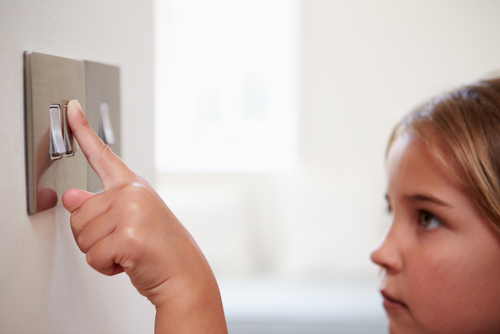Turn Stuff Off
Turning stuff off is easy, free and takes just a few seconds — better yet, it saves energy and money, and reduces your environmental impact. How can you beat that? Learn when to turn stuff off for maximum impact!
Your Impact
Action Steps & Tips
Introduction

Turning stuff off is easy, it's free and takes just a few seconds. How can you beat that? Turning off electronics and lights when you aren’t using them saves energy and money, and reduces your environmental impact.
Turning stuff off:
-
Saves energy and money
-
Is easy to do!
-
Reduces climate and air pollution
1Tips for turning stuff off
Turn Off Your Lights
It’s simple: When you leave a room, turn off the lights. If you walk by an empty room with the lights on, turn them off too!
Post a note. Post a note near the light switch to remind you to turn it off. Soon, it will become a habit.
CFLs. CFLs (Compact Fluorescent Lightbulbs) use lots of energy when they’re first turned on. Only turn them off when you won’t need them for more than 15 minutes.
Extra Credit: Make it even easier to turn off your lights and Install Smart Lighting Controls. With these smart systems, you can control your lights using your voice or smartphone!
Turn Off Your Electronics
Computers, printers, monitors, and televisions all draw electricity even when you aren’t using them. This is often called “vampire” power.
Powering down and unplugging your devices strategically can save you a lot of energy. Read on to learn when to power down each type of device.
-
Computers: If you won’t be using your computer for two hours or more, turn it off. Use “sleep mode” for short breaks.
-
Monitors: Turn your monitor off and unplug it when you don’t need it for 20 minutes or more. Turning down your monitor’s brightness will also save power.
-
Printers, scanners and other auxiliary devices: Turn these off completely and unplug them whenever you aren’t using them.
-
Entertainment Centers: Even when TVs look like they’re off, they’re actually using power in “standby mode.” Unplug them when you aren’t using them or use a smart power strip.
The best solution? Connect all your electronics to a smart power strip that makes it easy to turn the off power when not in use. Learn more in the Install Smart Power Strips action!
